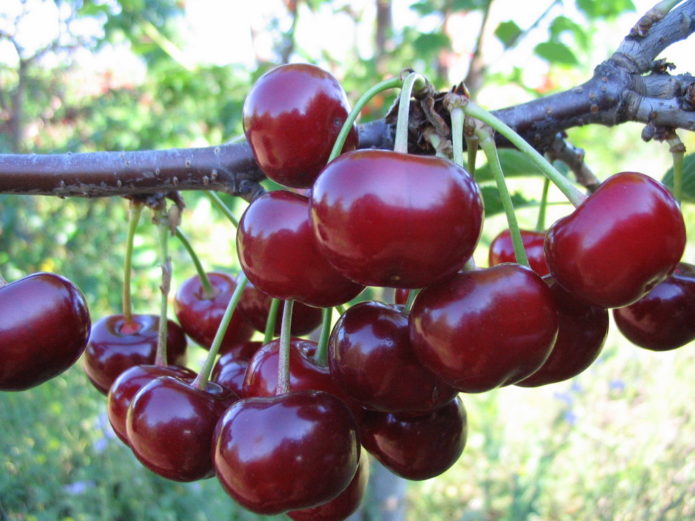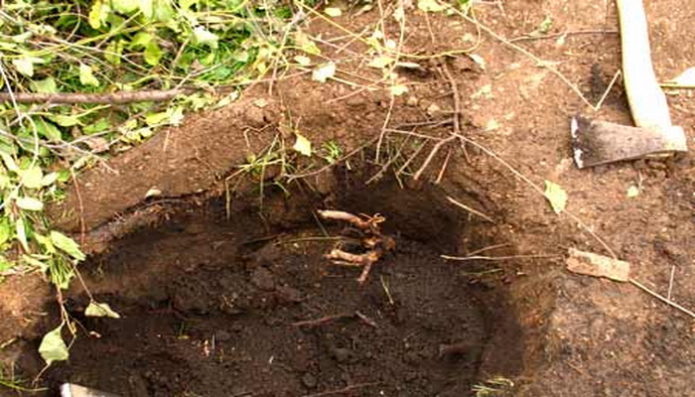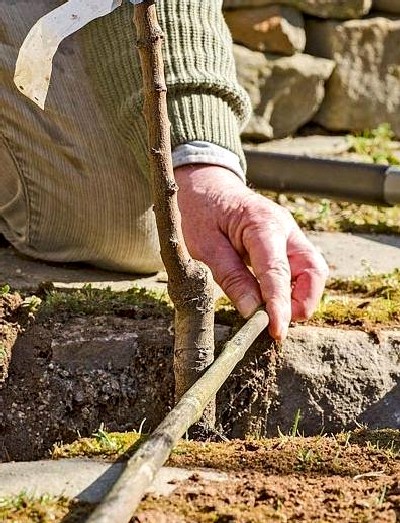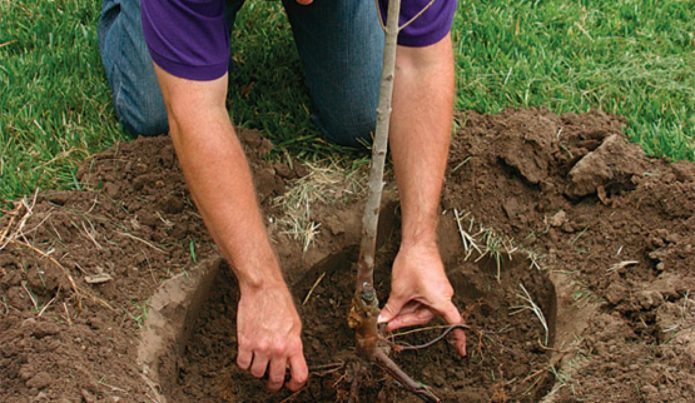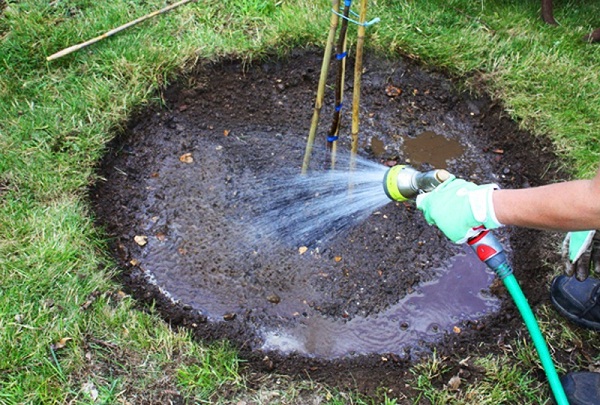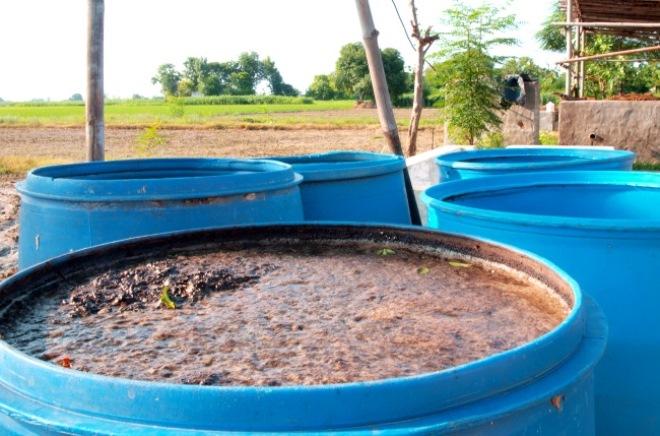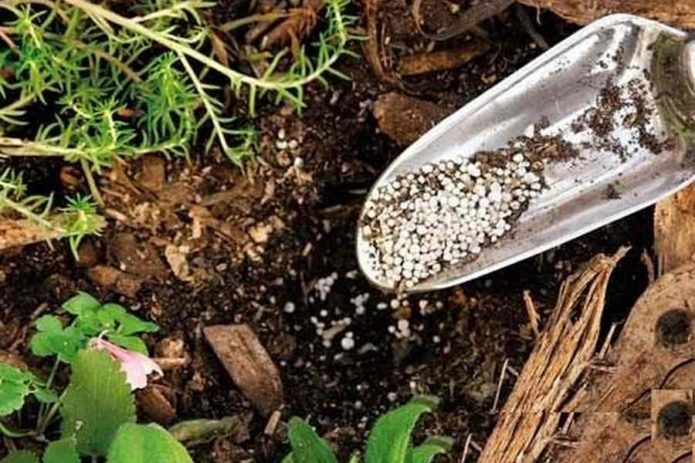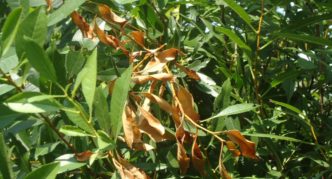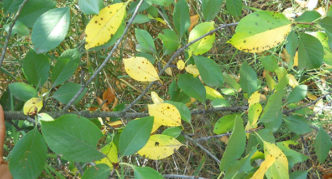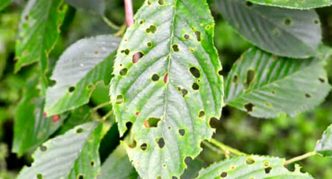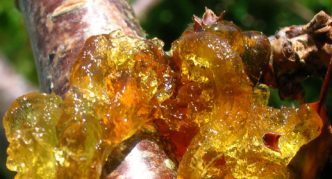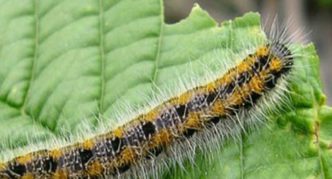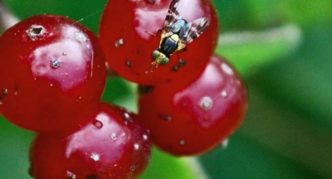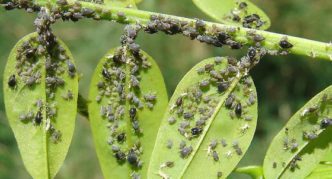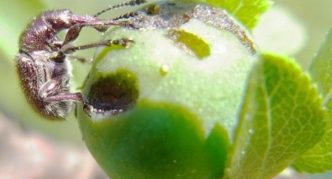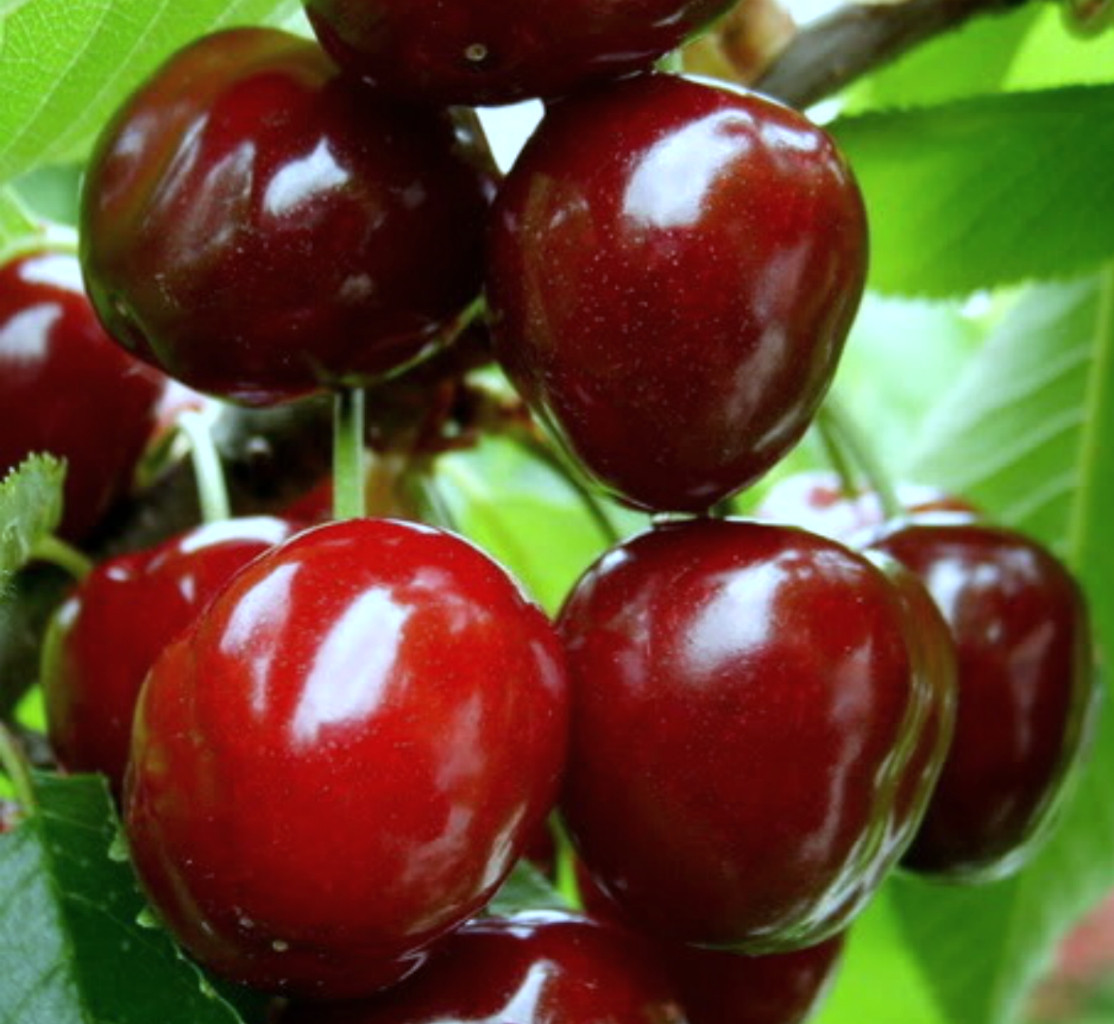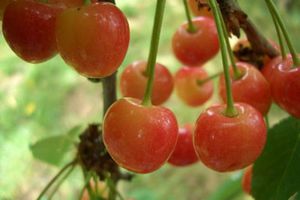Nochka is a great cherry and sweet cherry hybrid called duke. He combined the best qualities of his parents: the hardiness of the cherry and the larger, sweet cherry berries. The plant bears remarkably fruit in regions where it is almost impossible to get cherry berries, since its flowers freeze out in spring due to recurrent frosts.
Content
The history of the emergence of hybrids of sweet cherry and cherry
The berries of many varieties of cherries are rather small and have a sour taste, while large-fruited specimens are watery. Cherry, on the contrary, has large fruits with a dessert taste, but has poor winter hardiness. The breeders set themselves the task of developing a hybrid that has frost resistance of cherries and large, fragrant cherries. They managed to get a plant that was named Duke.
The hybrid was first bred in England and named May Duke (May Duke). The word duke (duke) now denotes a whole series of cherries, although this name is mainly used in Russia.
The variety Duke Nochka was bred by the breeder L.I. Taranenko at the Donetsk Experimental Fruit Plant in the Ukrainian city of Artyomovsk. The parents of the cherries were the Valery Chkalov cherry varieties and Nord Star cherry varieties.
Description of Duke Night
A feature of the variety is that the tree has the shape of a cherry crown, and branching, like a cherry. The night lays flower buds during the period of annual growth, which provokes an early flowering of the culture. The tree grows up to 3 meters in height. The leaves have a dark green hue and a glossy surface. Outwardly, they are similar to cherry, but somewhat larger. Flowers have a saucer shape, they are also larger than the buds of their parents.
Cherry Nochka forms rather large fruits weighing 7 g, collected in a cluster of 6-8 berries... The first harvest of a duke seedling gives already in the third year of life. The dark-burgundy fruits of Nochka are distinguished by a pleasant cherry taste and a magnificent cherry aroma, but without the characteristic cherry sourness.
The shoots of the duke variety Nochka are smooth and straight, covered with dark brown bark. Visually, cherry buds resemble dense and large cherry buds, but the flowering period begins somewhat later, around mid-May, when warm weather sets in and the threat of recurrent frosts passes.
The night is appreciated by gardeners for excellent immunity to many fungal diseases and for good winter hardiness... Thanks to this quality, Nochka can be grown in regions of the country with cold winters. Duke tolerates frosts well down to -30 ° C.
The Nochka variety is self-fertile, therefore it needs pollinators. To do this, near the duke (but no further than forty meters), you need to plant cherry varieties:
- Youth,
- Nord Star,
- Lyubskaya,
- Meteor.
Also, sweet cherries of the Tenderness variety are suitable as a pollinator.
It is advisable that no other trees grow between the duke and the pollinating cherries. Fertilization will not occur if the bees transfer pollen from apricots, pears or apple trees to no avail.
Table: characteristics of berries
| Criteria | Indicators |
| Berry tasting | 4.6 points out of 5 |
| Size and weight | Large fruits, weight on average 7 g (individual specimens reach 10 g) |
| Ripening period | End of july |
| Fruit color | Dark red |
Table: advantages and disadvantages of Nochka variety duke
| pros | Minuses |
| Drought tolerance | Self-infertility (requires pollinators on the site) |
| Frost resistance | |
| High immunity to coccomycosis | Low yield (up to 10 kg per tree) |
| Large fruits with good taste and aroma. |
Landing features
Duke is recommended to grow on slightly acidic and fertile soils. It is desirable that the site is well lit by the sun from all directions and is protected from strong winds.
When choosing a place for planting a duke of the Nochka variety, keep in mind that the culture does not grow well in lowlands, where water stagnates.
The best time for planting is early spring, because during autumn planting, immature seedlings can freeze in winter. If you purchased planting material in the fall, then you can save it until spring planting in a cold cellar or in a prikop.
Duke landing, step by step instructions:
- 2 weeks before the planned date of planting the duke sapling, apply organic fertilizers to the soil, and if the soil on the site is acidic, then add dolomite flour or fluff lime when digging.
- Dig holes 60x60 cm in size. Mix the top layer with humus and sand (1: 1: 1 ratio) and pour on the bottom of the planting hole. Then add a layer of soil without fertilizer. This is necessary so that the roots of the duke do not burn out.
- Moisten the soil.
- Place the seedling in the prepared hole vertically and straighten the roots.
- Fill the voids with earth and lightly tamp it.
- Form a hole around the seedling and pour 10 liters of water into it.
- Cut the duke sapling at a height of about 0.6 m from the surface of the soil and coat the cut with garden pitch.
Dukes are quite tall trees, so the distance between neighboring plants should be large (at least 5 meters). This must be taken into account when placing seedlings on the site. Close proximity to other fruit trees will negatively affect duke fruiting.
Agrotechnics of cultivation of Duke Nochka
Duke maintenance is simple. It is the same as for other stone fruit crops. The main tasks of the gardener will be mulching the trunk circle, watering, loosening, fertilizing and formative pruning of the tree.
The nuances of watering, mulching and fertilizing
While the root system of a young cherry tree (duke) is being formed, the plant needs a fairly large amount of moisture. In dry periods, at least 3 waterings are required, in each of which it is recommended to pour 15 liters under the seedling.
Adult dukes do not really need additional watering, they tolerate dry periods well. The Nochka variety does not like excessive moisture, which leads to stagnation of water. Waterlogging contributes to the formation of cracks on the trunk and branches, resulting in gum leakage.
Experienced gardeners recommend the main watering during the flowering period and the moment of fruit ripening. And 2-3 weeks before the start of berry picking, you need to completely stop watering.
Frequent watering during dry times can be avoided if you use a very effective method - mulching. After watering, the ground in the trunk circle is covered with peat, straw or withered grass. This technique will help to retain moisture for a long time, improve duke nutrition and curb weed growth.
Dukes are good because they do not require frequent feeding. If the required amount of organic fertilizers was added to the planting pit, then the next top dressing is carried out only 5 years after the planting of the seedling on the site. For this:
- Dilute 0.5 buckets of mullein with 2 buckets of water and add up to 0.5 kg of wood ash. The nutritious mass is infused for 4-6 days and filtered.
- After watering, add 0.5 buckets of infusion under the tree.
- Spend 2 dressings in early spring and during the flowering duke.
- In the fall, under the digging, 200 g of phosphorus fertilizers and 80 g of potash are scattered around the perimeter of the duke crown.
Pruning
Cherries are characterized by incredibly fast growth before the onset of fruiting. Because of this feature of the hybrid, it is very important to carry out sanitary pruning in the spring and autumn in a timely manner. The first annual shoots are advised to be shortened by 1/3. It is also necessary to completely cut out broken, dry and frozen branches.
Video: duke - the secret to high yields
Diseases and pests
Duke Nochka boasts good immunity to various diseases, especially coccomycosis. But under adverse weather conditions, problems can arise.
Table: diseases and methods of struggle
| Disease | Signs | Ways to fight |
| Clasterosporium disease (perforated leaf spot) |
| Treat the wood with a 5% solution of copper vitriol in the spring before the leaves appear and in the fall after falling leaves. |
| Gum therapy |
|
|
| Scab |
|
|
| Monilial burn | Leaves, ovaries and young twigs dry up unexpectedly. |
|
Photo gallery: manifestation of diseases
- Monilial burn is manifested by unexpected drying of branches
- Bright yellow spots appear on the leaf blades, which subsequently become darker and crack
- Clasterosporium disease can be easily confused with damage from leaf-eating insects
- Gum removal can lead to shrinkage of the shoot
Table: pests duke noch
| Pest | Signs | Ways to fight |
| Hawthorn | The caterpillars of the pest completely eat up the buds and young leaves. | Before flowering, spray the tree with a solution of Nitrafen or Karbofos. |
| Cherry fly | The insect damages the berries, they become soft, dark, rot and crumble. |
|
| Cherry aphid | Massive clusters of small black insects appear on young leaves and shoots. | Spray the duc with a solution of Inta-Vir or Decis immediately after the pest appears. |
| Cherry weevil | The insect eats away the buds, buds and ovaries, and the larvae deposited in the seeds damage the berries. | After flowering, spray the duke with Actellic, diluting the preparation in water according to the instructions. |
Photo gallery: duke pests
- Butterfly caterpillars completely eat up buds and young leaves
- The insect loves to feast on berries, which become soft and rot
- Cherry aphid is a small black insect, clusters of which appear on leaves and shoots
- The pest eats away the buds, buds and ovaries, and the larvae deposited in the seeds damage the berries
Reviews of gardeners about Duke
Both cherries and dukes (cherry-sweet cherry) are self-fertile! They all need pollinators. And, unfortunately, pure cherries do not pollinate either dukes or cherries. I bought dykes, picking pollinators for each other. And with regard to cherries - there is a positive experience. My friend's grow and even bear fruit (Biathlon area). But they were planted according to all the rules - on high beds, covered with a bath wall from the north, well illuminated by the sun, mutual pollinators. This experience gives me hope!)))
And I planted the Nochka variety. It has large, sweet and sour fruits. In addition, this duke is frost-resistant and partially self-fertile. Although for a stable, high yield, a pollinator is needed, for example, the Turgenevka or Ksenia varieties. "Nochka" is also resistant to some diseases, such as coccomycosis.
My grandmother, in the Voronezh region, and my husband's in Kazan, the duke grows on the site, it still reminds me more of a cherry, but a little sweeter. They, like cherries, are not afraid of cold weather. As far as I know, they grow varieties: Ivanovna and Nochka. Ripen towards the end of June. Here they grow in an open area, there are a lot of berries, they brought them with them, frozen on compote, it is poorly stored, or I did not store it that way, but the frozen compote is just super. They grow at a distance of about four meters from each other. Many of their varieties are self-fertile. The grandmothers still have a self-fertile cherry variety for pollination. Buy seedlings only in trusted places so that you know what kind of variety you have, otherwise they can slip the defective ones. The cultivation technique is almost the same as for ordinary cherries, they just love a little more heat.
In the past few years, many Russian gardeners have taken a great interest in the cultivation of cherry and cherry hybrids (dukes). One of the most promising varieties is Nochka, whose berries combine the sweetness of sweet cherries and the juiciness of cherries. Although the yield is not very high, this disadvantage is fully compensated by the size of the fruits and their magnificent aroma.
